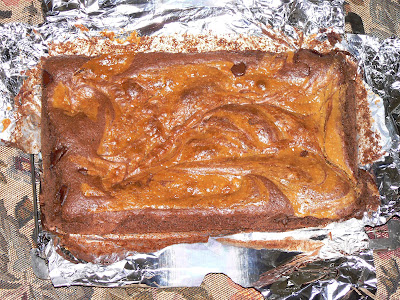There's another new shop in Teramachi... (or maybe it's actually Sanjo)... and it's my idea of heaven (well, almost!) "Rotti Bun". It doesn't sound immediately appealing, does it? I'm not even sure it sounds edible. But the smell hooked me as I was walking past, and drew me into the shop. It smells like your mother is the best baker in the whole world, and she's been baking cookies and cakes just loaded up with love all day long. Seriously!
They had a selection of drinks (comparable in price and style to Starbucks) and a choice of three different buns - regular, vanilla, and chocolate. I ordered caramel macchiato and a regular rotti bun, and took a seat by the window. The coffee was just how I like it, and the *bun* ... was... !!!!!... even better than it smelt!
So what is a rotti bun? Well if you know what melon pan is you've got a starting point. A sort of cross between a sweet roll and sponge cake with a slightly crisp shell covering it (if it's any good at all.) And if you've ever eaten a freshly baked melon pan while it's still warm, well you're getting closer to a rotti bun. But its better than that. And in the center it has just the right amount of sweet butter. Every mouthful was divine, right to the last, and it was so good I didn't rush up to the counter and buy another one, because it was unthinkable that I should sully such a perfect experience with greedy repetition.







.JPG)






















